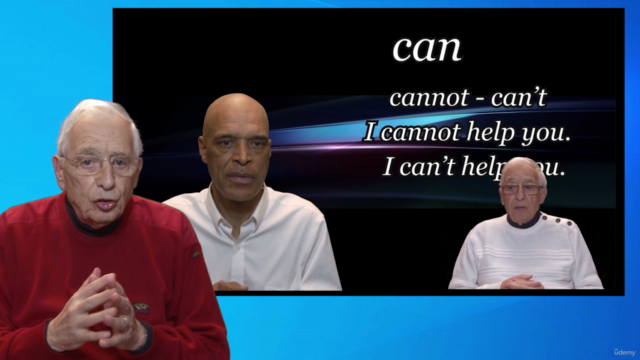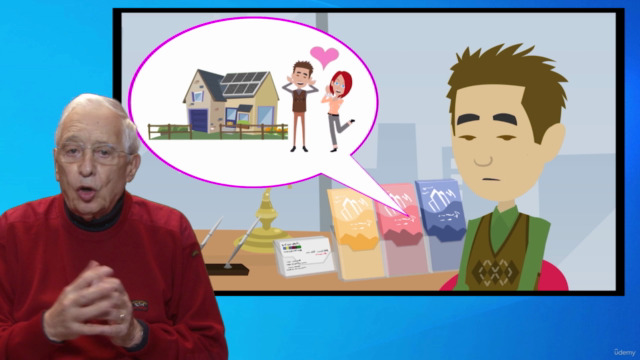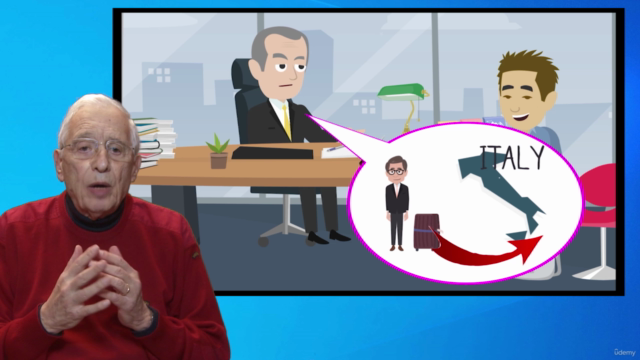English per te, INGLESE INTENSIVO specifico PER ITALIANI

Why take this course?
📚 Unit 3: Titles and Politeness
Lesson 1: You work for...
This lesson introduces the phrase "I've got a driving license" which is an example of how to express possession in English (e.g., "I've got" for "I have"). It also touches on the use of "have got" instead of "have" in certain contexts.
Lesson 2: Do you have an appointment?
In this lesson, you learn how to ask if someone has a planned engagement in the future using "do you have" and the infinitive form of verbs (e.g., "to have").
Lesson 3: Hector needs a garden...
This lesson focuses on indefinite articles (a, an) and indefinite adjectives. It also covers the use of "one" without an article when referring to a person or thing mentioned for the first time in a text or conversation.
Lesson 4: Currencies and Measures
Here, you'll learn about various currencies and measures used in English-speaking countries, including how to correctly name quantities, as well as some vocabulary related to these topics.
📚 Unit 6: Everyday Conversations
Lesson 1: How do you do?
This lesson covers short answers to greetings and farewells, including formal salutations like "How do you do?" and responses such as "Nice to meet you" or "Goodbye."
Lesson 2: Naomi’s cat is beautiful
You'll learn about possessive adjectives (e.g., "her," "its") and how they are used to indicate ownership in a more formal or objective manner compared to personal pronouns.
Lesson 3: It’s hers
This lesson explains the use of possessive pronouns (e.g., "hers," "his," "its") instead of possessive adjectives, often used as subjects or complements in sentences.
Lesson 4: The in-laws
Learn about English kinship terms and how to refer to family members by relationship (e.g., "in-laws," "step-parent").
Lesson 5: At the chemist - Transportation
This lesson includes vocabulary related to transportation, such as words for different types of vehicles, modes of transport, and phrases you might use when visiting a pharmacy (chemist).
📚 Unit 9: Food and Drink
Lesson 1: What time is it?
This lesson introduces various ways to tell the time in English, including both analog and digital clock expressions.
Lesson 2: Poor John!
You'll learn how to express sympathy or empathy using question tags (e.g., "doesn't he?") which are used to confirm a statement or seek agreement.
Lesson 3: Is there any money left in the drawer?
This lesson covers the use of "some," "any," "every," and "each" to ask about quantity and availability, often used when questioning whether something is present in a certain place or situation.
Lesson 4: I’m dying of thirst
Here, you'll learn expressions related to being very uncomfortable or in need of something (like water), such as "dying of hunger" or "dying of boredom."
Lesson 5: I arrived at the bus stop 20 minutes ago
In this lesson, you'll learn phrases to describe events in the past using relative clauses starting with "since" or "for," and expressions like "ago" to indicate a time interval between two past events.
📚 Unit 10: Clothing and Accessories
This unit focuses on vocabulary related to clothing and accessories, which will help you describe outfits, ask for opinions on what to wear, or talk about fashion in general.
Course Gallery




Loading charts...